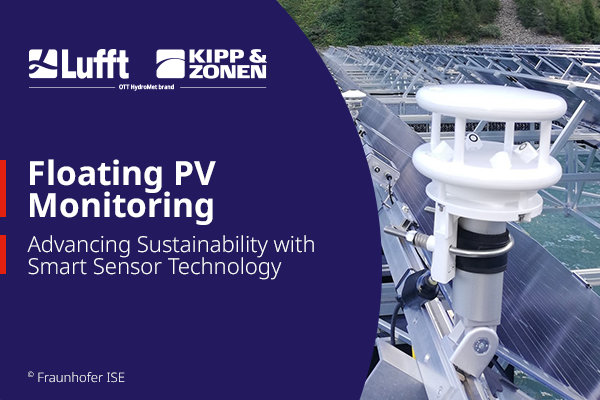Higher, more robust, more reliable: Parallel to the growing requirements for wind turbines, the requirements for monitoring sensors grow as well. But how can wind sensor manufacturers fulfil these wishes? And how should a future wind sensors look like? After analysing the current conditions and trends on the wind energy market, our CEO Klaus Hirzel compiled a wish list for future wind sensors.
Higher, more robust, more reliable: Parallel to the growing requirements for wind turbines, the requirements for monitoring sensors grow as well. But how can wind sensor manufacturers fulfil these wishes? And how should a future wind sensors look like? After analysing the current conditions and trends on the wind energy market, our CEO Klaus Hirzel compiled a wish list for future wind sensors.
Framework conditions
More than 200,000 wind turbines were installed in the last few years associated with the worldwide energy revolution. Meanwhile, the largest market is China followed by the United States, Japan, the United Kingdom, India and Germany. The global market for renewable energy will continually grow in the coming years.
Also the installation risks grow: Turbines get higher and conditions get more extreme. This refers to cold-climate installations as well as to offshore applications in salty environments. Also, the ambient conditions influenced by more extreme weather conditions such as storms in future. Similar to the stock market, the volatility of the weather is increasing. Early shut down and position adjustments are important for the turbines to stay stable.
Ultrasonic wind sensors such as the VENTUS-UMB can measure up to 300 km/h wind tops already. Ice detection at the wing tips at nearly the speed of sound is still a big challenge for metrology.
Environmental conditions
Still more than 50% of the wind sensors installed on turbines have mechanical moving parts. On the other hand, the ultrasonic technology without moving parts and with extremely fast response times is used on modern turbines.
Unfortunately, this important reading is carried out redundandly in few cases only. However, a defective wind sensor leads to the loss of control and efficiency. This is why, an extremely high availability is demanded by 99.99% of the operators.
In many cases, wind farmers who plan to use redundant constructions in the technical design already, tend to use the same sensor twice. Since usually identical sensors behave exactly the same under identical conditions, they behave the same when it comes to icing problems as well. In the worst case, no data at all is delivered in such cases.
In this respect, hybrid applications make sense in which two ultrasonic sensors from different manufacturers or an ultrasonic sensor combined with a mechanic sensor are used. With two different measuring methods, it is unlikely that both sensors fail temporarily at once in case of icing for example.
But for a timely turbine position adjustment, the wind is measured too late “behind the wings“. The comprehensible desire is to measure the wind speed and direction at a up to 2 meter distances of the turbine in order to always correctly adjust the turbine.
Icing detectors are needed to protect the turbine blades from imbalance and instability. Icing often starts at the wing tips, therefore a direct detection is the safest method. Usually, the risk of icing at these spots is not measured on today’s turbines.
Visibility sensors are necessary for illumination. For this, optical techniques with forward scattering light are used. Disadvantage of this procedure is that the sensors don’t operate maintenance-free.
Precipitation intensity and air pressure sensors deliver further information which are optionally desired for an overall record of the environment states.
Product requirements
For the housing, no plastic should be used. Sea water- and corrosion-resistant aluminum is the only material to survive long-term. Vibration testing is essential before a turbine testing can take place. The sensor technologies (radar, ultrasound, laser, etc.) should be long-term stable and ideally drift-free. Manufacturers of sensors share this information with users on request, standard data sheets contain this important information only in exceptional cases.
Accuracy should be verified by laboratory calibrations. A calibration point is usually not enough, because a sensor is linear very rarely. A qualified manufacturer certificate contains various measurement comparisons over the entire measurement range. The sensor system should also be easy to integrate into different controller environments and should have an open protocol. Though built-in microprocessors, parameterization, diagnostics and data queries are very simple nowadays.
Maintenance of environmental sensors
The traditional concept of a reactive maintenance (only on a fault) is not sufficient for the wind energy sector. The service and replacement costs are too high, the downtime of the turbine is inacceptable.
Is a proactive maintenance the right method? In many cases a preventive replacement of wind sensor every 5 years is usual. MTBF testing of the manufacturers show, that such sensors reliably work for more than 10 years. Thus, too much money is spent for safety reasons in this case.
Predictive maintenance can be better as long as the sensor has diagnostic capabilities. Or, in combination with the other environment sensors on the turbine, the controller is able to detect that one of the sensors needs to be changed soon. This is an ideal application of the so-called industry 4.0, where smart sensors negotiate with smart controllers in order to estimate the ideal time of replacement. Another approach for intelligent and timely maintenance is the “reliability-centered maintenance”.
All of these maintenance concepts assume that a loss of sensor stability sensor is detected early enough.
Summary
There are still no special wind sensors on the market today which have been designed exclusively for wind turbine applications. Many wind sensors were developed e.g. for meteorological or military applications. They’ve been improved constructively to fit the requirements the best. Why don’t turbine manufacturer ask for the ideal environmental sensor for their applications? The annual quantities allow this claim, at least. The result would be smart, modular, and price-compliant.


